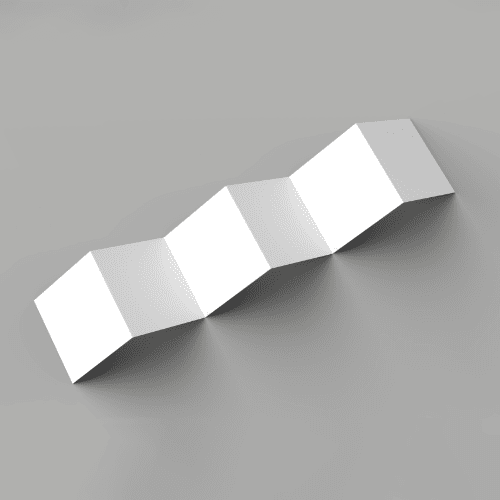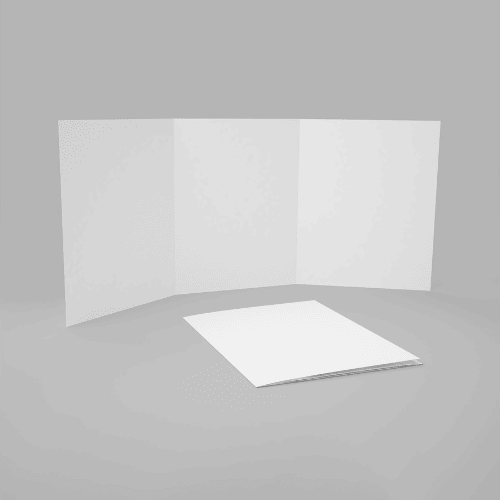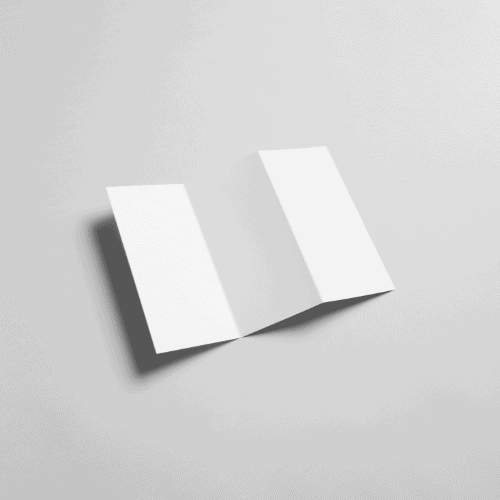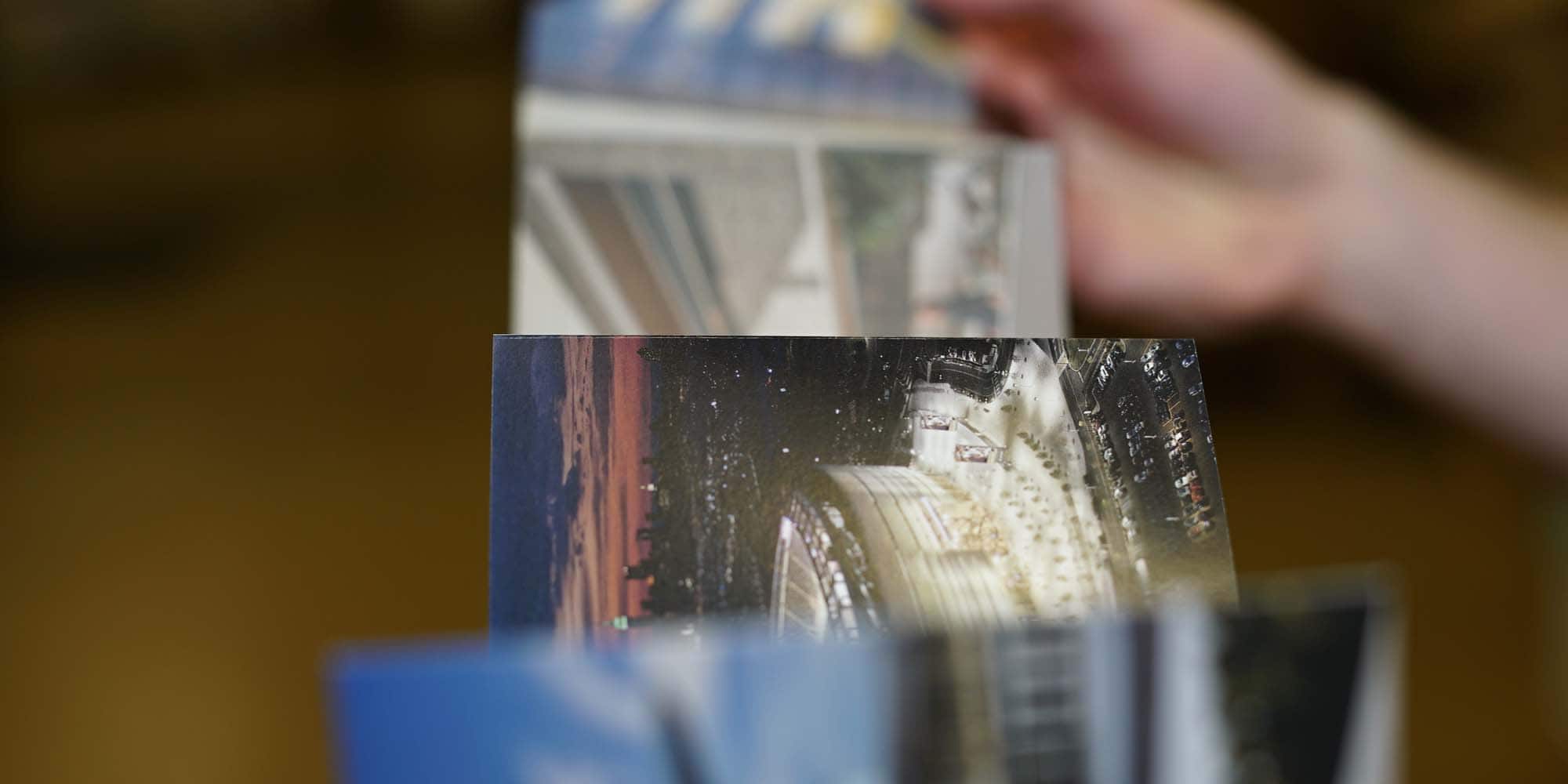In the world of print design, brochures and pamphlets remain steadfast as versatile tools for conveying information, promoting products, and telling stories. While the content and imagery of these marketing materials are essential, the way they are presented can have a significant impact on their effectiveness.
Enter creative folding techniques – a realm where paper becomes a canvas for imagination to unfold. In this article, we will explore some innovative folding and binding options that can transform your brochures and pamphlets from ordinary to extraordinary.
1. Accordion Fold
The accordion fold is a classic technique that adds an element of surprise to your printed materials. As the name suggests, this folding method resembles the pleats of an accordion, creating a series of panels that can be unfolded one after the other. It’s an excellent choice for step-by-step guides, timelines, or any content that follows a sequence.
Instructions:
- Start with a sheet of paper that is three times the width of your desired panel size.
- Divide the paper into equal panels using folds.
- Alternate between mountain and valley folds to create the accordion effect.
- Ensure your content flows logically as the panels are unfolded.

2. Gate Fold
The gate fold is an elegant way to unveil your message. When the two sides of the brochure are folded towards the center, it creates a gate-like entrance that draws readers in. This technique is ideal for revealing a big reveal, product launch, or storytelling with a dramatic flair.
Instructions:
- Begin with a standard-sized sheet of paper.
- Fold both sides of the paper towards the center with a slight overlap in the middle.
- Make sure your content is strategically placed to engage readers when they open the gates.

3. Z-Fold
The Z-fold, also known as the zig-zag fold, is an attention-grabbing option that provides a dynamic presentation. The paper is folded into a series of “Z” shapes, creating an unfolding experience that guides the reader’s focus from one section to another. This technique is perfect for showcasing before-and-after transformations or providing layered information.
Instructions:
- Use a standard-sized sheet of paper.
- Divide the paper into three equal sections.
- Fold the right third towards the center and then fold the left third over it.
- Ensure that your content logically follows the folding sequence.

4. Roll Fold
If you’re looking for a compact yet engaging way to present information, the roll fold might be the answer. As the brochure is unfolded, it gradually reveals each section in a seamless sequence. This technique is excellent for conveying a story with a clear beginning, middle, and end.
Instructions:
- Start with a sheet of paper that is three times the width of your desired panel size.
- Divide the paper into equal sections using folds.
- Fold the rightmost panel towards the center and continue folding the remaining panels accordingly.
- Make sure your content progression aligns with the folding pattern.

Setting Up Files for Unique Folding Patterns
Creating print-ready files for these creative folding techniques requires careful consideration. Here are some tips to ensure your designs come to life as intended:
- Template Setup: Use design software like Adobe InDesign to set up your document with accurate measurements for each panel. Create guidelines to indicate fold lines and keep essential content within safe zones.
- Graphics and Images: Extend images and graphics across multiple panels to create a cohesive visual experience when the brochure is unfolded.
- Folding Lines: Clearly mark folding lines in your design software. These can be indicated with dashed lines or specific colors that won’t appear in the final print.
- Content Alignment: Arrange your content so that it flows logically when the brochure is unfolded. Consider how each panel reveals information and make sure the narrative makes sense.
- Print Testing: Before finalizing your design, print a test copy and physically fold it according to your chosen technique. This step can help you identify any issues with alignment, content placement, or folding accuracy.
Incorporating creative folding techniques into your brochures and pamphlets opens up a world of possibilities for engaging your audience. These techniques not only provide a tactile experience but also enhance the visual impact of your printed materials.
Whether you’re unveiling a new product, telling a compelling story, or sharing step-by-step instructions, these innovative folding methods can turn your designs into memorable and effective communication tools.
Ready to bring your print designs to the next level with these creative folding techniques? If you’re excited to captivate your audience and make a lasting impression, look no further than RoyerComm. Our experienced team of designers and print experts can turn your ideas into tangible works of art that leave a mark. Whether it’s brochures, pamphlets, or any other print materials, we’re here to help. Contact us today and let’s turn your vision into folded reality!
Request a Quote
Over the years we have accumulated a lot of knowledge about how to create compelling impactful marketing communications. We are here to answer any questions you might have or offer guidance to help take your project from good to GREAT! Give us a call today.
